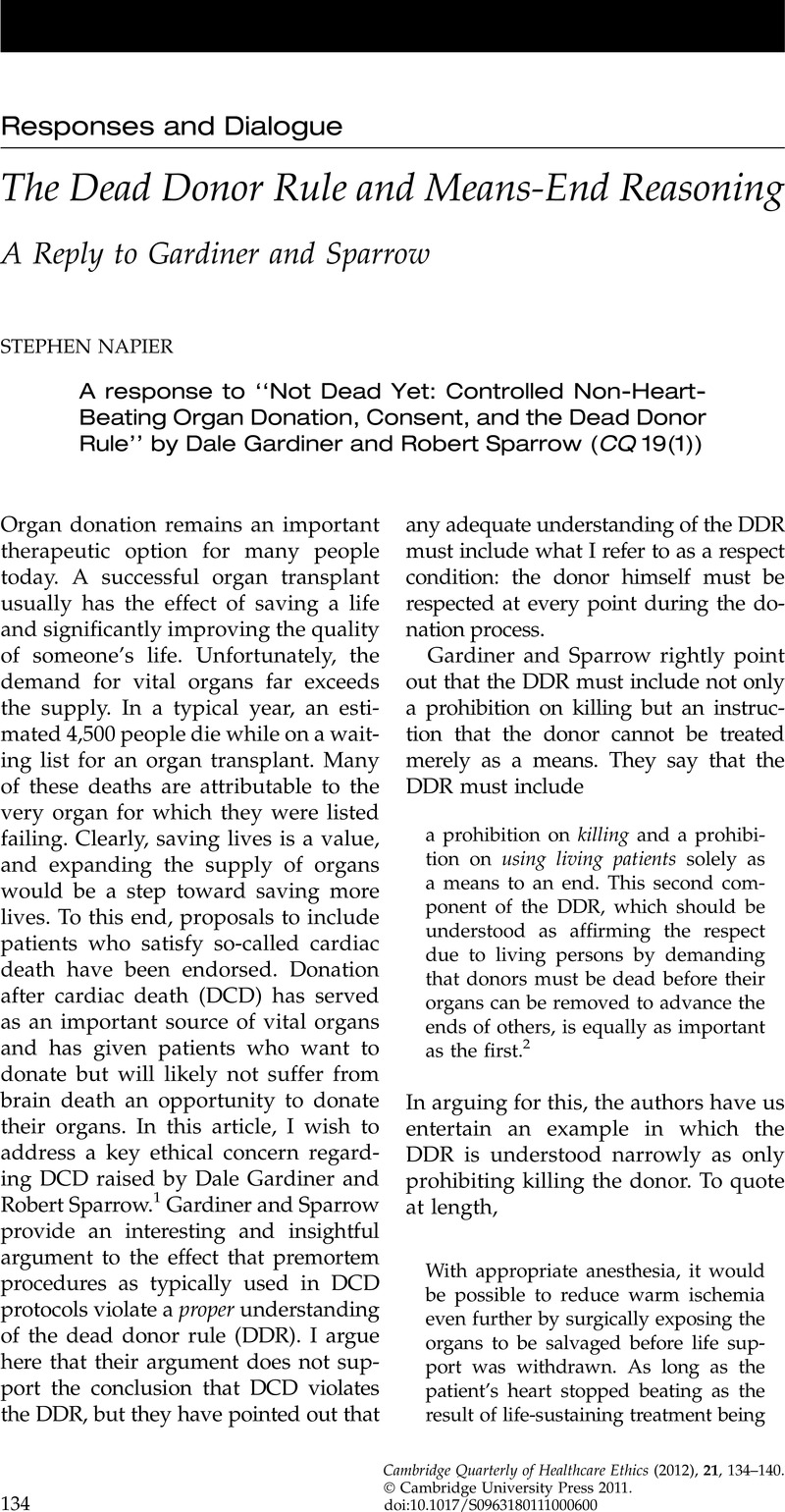A Reply to Gardiner and Sparrow
Published online by Cambridge University Press: 13 December 2011

1. Gardiner, D, Sparrow, R.Not dead yet: Controlled non-heart-beating organ donation, consent, and the dead donor rule. Cambridge Quarterly for Healthcare Ethics 2010;19:17–26.CrossRefGoogle ScholarPubMed
2. See note 1, Gardiner, Sparrow 2010, at 20.
3. See note 1, Gardiner, Sparrow 2010, at 21.
4. Laird, J.The ethics of dignity. Philosophy 1940;15(58):135.CrossRefGoogle Scholar
5. Kant, I.Critique of Practical Reason. Beck, LW, trans. Indianapolis: Bobbs-Merrill; 1956:76–7.Google Scholar
6. Hill, TE.Humanity as an end. Ethics 1980;91(1):87. Emphasis mine.CrossRefGoogle Scholar
8. See note 1, Gardiner, Sparrow 2010, at 21.
9. Talbot, D, Gok, M, Minor, T. Thrombolysis in the non-heart-beating donor. In: Talbot, D, D’Alessandro, AM, eds. Organ Donation and Transplantation after Cardiac Death. New York: Oxford University Press; 2009:103–16.CrossRefGoogle Scholar
10. See note 1, Gardiner, Sparrow 2010, at 22. Emphasis original.